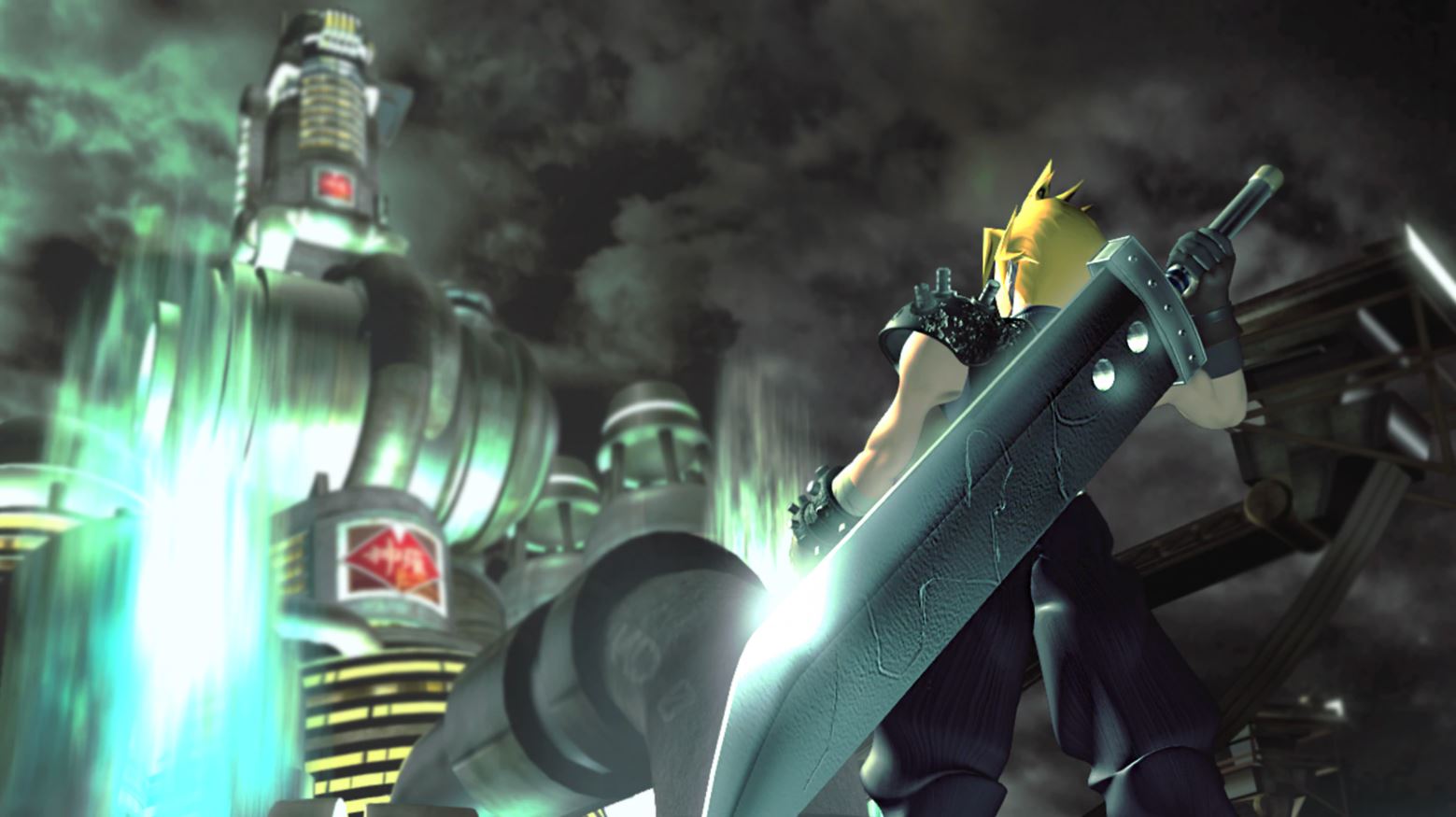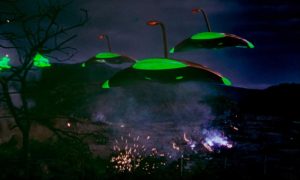
JRPGs have historically been a niche genre. Ask most gamers to name a character from Dragon Quest or Persona, and they will likely draw a blank. But ask them to name someone from Final Fantasy, odds are they will say, “Cloud Strife.”
The Final Fantasy series has been around for almost 40 years and consists of 16 main entries plus countless spin-offs and sequels. Yet when most people think of the series, they usually jump to Final Fantasy 7. Even Square Enix considers this game its golden child. Not even Final Fantasy 14 and its incredible ongoing profitability can compare to Final Fantasy 7.
Nevertheless, the question arises: How and why did Final Fantasy 7 become such a mainstream hit? The answer is a combination of game design and development decisions, a new marketing strategy, and the perpetual motion machine of popularity.
Why Square Chose the PlayStation For Final Fantasy 7
Before Sony introduced the PlayStation, Squaresoft had a solid partnership with Nintendo. Every Final Fantasy game up to Final Fantasy 6 was released on the NES or SNES. However, the technical specs of the Nintendo 64 and the potential of the PlayStation put Square at a fork in the road.
Final Fantasy 7 actually began life as a 2D game for the SNES. However, when numerous Squaresoft employees had to pivot to Chrono Trigger to get that game out the door, Square had to start over and focus on an iteration for the next console generation.
At first, the staff toyed around with the Nintendo 64’s capabilities and even made a concept trailer that envisioned battles in a 3D engine. That experiment quite literally slowed to a crawl when Square encountered performance and framerate issues.
While many at Square, including Executive Producer Tomoyuki Takechi, felt that creating a 3D RPG was a risky move, the team decided to go with the PlayStation and its CD-ROMs for that endeavor since they offered more coding space. These CDs let Square’s programmers craft the largest Final Fantasy world yet, and the PlayStation’s 3D graphics revolutionized presentation. 3D models superimposed over pre-rendered backgrounds gave environments more depth than 2D-pixel environments.
Furthermore, 3D battle arenas let the camera swing in dynamic and cinematic movements, giving many attacks impact and weight that prior RPGs lacked. Most importantly, CD-ROMs also had enough space for the latest innovation in game presentation: full motion videos (FMVs).
Before Final Fantasy 7, Squaresoft RPG cutscenes played out with sprites running around screens and pantomiming expressions. FMVs could deliver impressive cinematic sequences full of dynamic camera angles and actual emoting characters. And we can’t forget the PlayStation’s audio. With twenty-four sound channels, sixteen of which were reserved for music, composer Nobuo Uematsu was able to score one of his most impressive game tracks ever. In many ways, the mainstream success of Final Fantasy 7 and the PlayStation are two sides of the same coin.
A Truly Epic Marketing Campaign
When Square was preparing to release Final Fantasy 7, the studio execs considered the game’s success in Japan a foregone conclusion, but North America and Europe were another matter. To give Final Fantasy 7 its best possible chance in those regions, Sony requested publishing rights in the U.S. and Europe and offered a lucrative signing deal in return. This partnership made future Final Fantasy games synonymous with Sony and gave Square the opportunity to put some serious cash and ambition behind game promotions.
To start, Square closed its marketing office in Washington and hired new staff from an office in Costa Mesa, California. Square then started the hype train by handing out demo discs to anyone who attended the first Tokyo Game Show or purchased Tobal No. 1.
Next, in August of 1997, Square began a massive three-month advertising campaign. Square’s new marketing branch created ads and commercials and cast as wide a net as possible. During this period, you couldn’t read a comic book, skim Rolling Stone, or watch an episode of The Simpsons or Saturday Night Live without seeing a promotion for Final Fantasy 7. According to Tomoyuki’s calculations, Square spent a total of $40 million in advertisements, half of which went to the North American Market. The remaining $20 million was divided evenly amongst the European and Japanese markets.
Squaresoft supplemented this plan by also making sure the game could reach even more customers than ever before. The $10 million Square spent on advertising in Europe was not spent idly since it was many European gamers’ introduction to the series. Moreover, several months after Final Fantasy 7‘s release, Square released a PC port: a first for the series. The company relied on its Costa Mesa branch and Eidos Interactive to handle programming, as well as further marketing and publishing. The result surpassed sales predictions (the game’s unique trapezoidal box stood out on shelves) and allegedly provided the source code for future console ports.
The success of Final Fantasy 7 in one market circled back to continue its money-printing fame in prior ones. Japanese markets got a second stab at Final Fantasy with the “International Version,” which retranslated the North American version back into Japanese. Why did Square do this? Because the Western version launched with tweaked battle and puzzle difficulties, better story pacing, and additional bosses and enemies. This decision to rerelease a definitive version was the first of many that solidified Final Fantasy 7’s tendency to fuel its success with further success.
Final Fantasy 7 Earned Its Glowing Reviews
All the marketing and console hardware in the world can’t turn a bad game into a beloved one, irrespective of financial success. Since Final Fantasy 7 is widely considered a beloved classic, it had to do something right. More like several things.
As previously stated, the team behind Final Fantasy 7 used the PlayStation’s hardware to produce numerous firsts for the series, especially when it came to presentation. Uematsu took advantage of those sixteen music channels via a modified approach. Instead of focusing on single melodies, he conducted the soundtrack as if it were a film’s score, creating music that was both more subdued and more cinematic.
The resulting songs are considered some of his best creations, One Winged Angel chief among them. The song was the first Final Fantasy tune to include lyrics and left an impression on everyone. Final Fantasy 7’s soundtrack was so impressive that it snagged third place on Japan’s music charts thirteen times.
Final Fantasy 7’s 3D graphics also played a role in the game’s legacy. Nobody had seen a JRPG quite like it. In prior Final Fantasy titles, hardware limitations imposed static camera angles during battles. Final Fantasy 7 ramped it up a notch with a free-moving camera that followed characters to emphasize the weight of attacks.
Summons also received a presentation buff. In prior games, they were just big sprites that filled the screen with light flashes and effects. Final Fantasy 7’s 3D models and camera emphasized their stature and strength like never before. This increase in scope continued outside of battles, as the world map could seemingly stretch for miles. In previous entries, the map was flat and 2D, which didn’t evoke the same jaw-dropping awe.
Final Fantasy 7’s setting and narrative also broke new ground for the franchise. Unlike previous Final Fantasy games, Final Fantasy 7 takes place in a semi-contemporary world that reflects ours. It’s a world with guns, cars, and evil corporations, but also a world with magic, ghosts, and robots. Squaresoft also populated this new direction with a more mature narrative. The story focused on themes of life, death, and loss, all of which were driven home via the game’s cinematic nature. Still, what good is a narrative without characters to drive it?
Many gamers consider Final Fantasy 7’s cast among the franchise’s best, even if they aren’t the cream of the series’ crop. Cloud, for instance, is a fantastic realization of the unreliable narrator trope. He starts as a cookie cutter no-nonsense soldier, but as the game goes on, the story leaves bread crumbs that hint he’s not only not who he says he is but may not be who he thinks he is.
The reverse side of Cloud’s coin is none other than the main antagonist, Sephiroth. The game gradually reveals how and why he became a tantamount mythical figure. You can’t help but feel sorry for him, as he’s as much a victim as he is a villain. He’s still gone mad and needs to be stopped, though.
And of course, we can’t forget about Aerith. She is memorable thanks to her personality, and she’s indispensable on the battlefield. Players learn to rely on her, and then the game kills her in a cutscene. She isn’t the first protagonist to die in Final Fantasy, but her death is the most memorable because it is the gravitational center of two of the game’s themes: loss and moving on from loss. Yes, Aerith’s death is an example of the “fridging” trope (a gruesome, often fatal, event happens to one character to further the character arc of another), but it’s an effective plot twist. Countless gamers agree that Aerith’s death is the most impactful narrative event to ever occur in video games.
The combat system also received a nice spit and polish for Final Fantasy 7. While battles still rely on the ATB system that had been a series staple since Final Fantasy 4, Square garnished it with never-before-seen additions. Limit Breaks improved upon Final Fantasy 6’s desperation attacks, which are used at random and only if a character is at critical health.
The game’s iconic Materia system added another intriguing layer of depth. Unlike previous Final Fantasy games, where characters have their own stats and spells, the cast of Final Fantasy 7 lacks such innate abilities. Instead, party members have to slot Materia into their weapons or armor. That mechanic allows for freeform character builds that are slightly more complex yet enjoyable to explore. Finally, since Square had more coding space, they programmed more advanced enemy gimmicks and behaviors, such as preventing one boss from ever attacking Tifa.
Add an unprecedented amount of end-game content and optional activities, and it’s no wonder Final Fantasy 7 received rave reviews and left a lasting impression on the gaming populace.
Final Fantasy 7 Printed Money, Sequels, and Cameos
In the aftermath of Final Fantasy 7, gamers found a new title to champion as the pinnacle of JRPGs, while developers and publishers found a new cash cow. So long as they kept the Final Fantasy 7 train running.
Because Final Fantasy 7 proved an overwhelming success, and because the game helped the JRPG genre gain traction in the West, Squaresoft (later Square Enix) greenlit future related projects, from spin-offs such as Crisis Core and Dirge of Cerberus to cameos in Super Smash Bros. and Ehrgeiz. And, of course, rereleases and remakes. While Final Fantasy 3 was remade before Final Fantasy 7 (for the Nintendo DS), Final Fantasy 7’s remake received far more publicity and love.
Heck, when Sony needed to demonstrate the PlayStation 3’s graphical capabilities, the company teamed up with Square to produce a technical demo concept trailer that teased a Final Fantasy 7 remake. Granted, Square Enix didn’t create a bona fide remake for several years, but the trailer generated so much interest that it ended up triggering a massive online debate about a game that didn’t even technically exist. All those years later, the game some fans still wanted most was more Final Fantasy 7.
Once Final Fantasy 7 staked its claim, Square only needed to give fans new reasons to talk about the game, and momentum took care of the rest. Players checked out the new Final Fantasy 7 media, rediscovered the game with a new playthrough, or bought a version playable on modern consoles. Given the popularity of the original title, the Final Fantasy 7 zeitgeist engine might burn for eternity.
The post How Final Fantasy 7 Became a Mainstream Blockbuster appeared first on Den of Geek.










